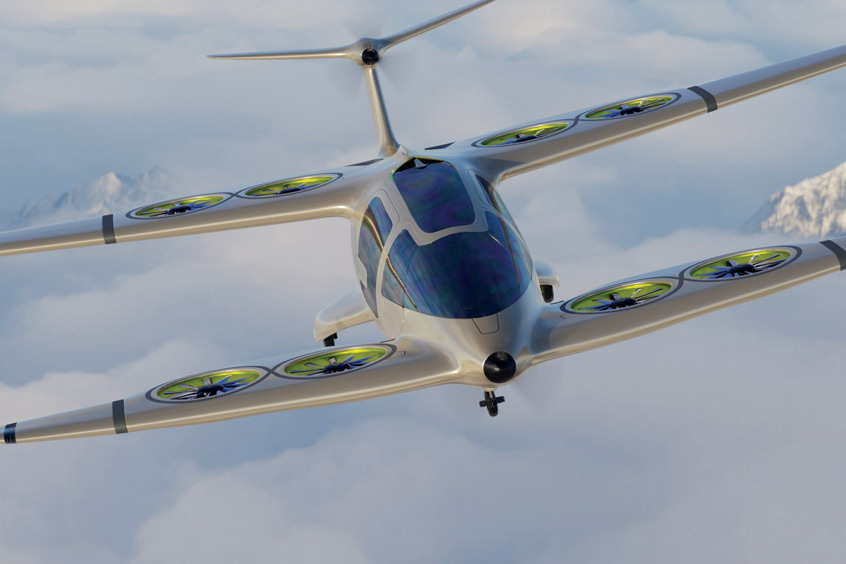ACE 2026 - The home of global charter.
 The bimonthly news publication for aviation professionals.
The bimonthly news publication for aviation professionals.

Toulouse-based Ascendance Flight Technologies has unveiled its redesigned five seat VTOL aircraft, Atea. The new configuration has an integrated, modular hybrid system called Sterna, where an electric engine is powered by merging two energy sources: combustion and electric (battery). Over time, Ascendance plans to phase out the combustion energy source and replace it with new sources of cleaner energy such as hydrogen or SAF.
Eight rotors now feature on the new tandem wing configuration. This shrouded rotor technology allows increased power during the take off and landing phases and offers significant noise reduction. The rotors are set in a lift and cruise configuration, with two separate propulsion systems for vertical and horizontal flight; the rotors provide vertical lift while propellers on the nose and tailfin drive horizontal flight. The number of rotors guarantees manoeuvrability of the aircraft in case of failure, in compliance with regulatory requirements, and the absence of pivoting mechanisms reduces risk of failure, which also simplifies the aircraft’s certification while improving overall aircraft safety.
“We set-up Ascendance Flight Technologies with a very clear vision of what we wanted to achieve: to accelerate transition towards green aviation thanks to hybrid technology” says co-founder and CEO Jean-Christophe Lambert. “The design of the Atea is the concrete reflection of our values, our experience and of our know-how. The aircraft we are presenting to you today is the result of huge efforts by our R&D department, tests and trials on four prototypes and a great deal of thought on costs and the ease of flying such an aircraft. Its characteristics provide all the performances expected by a sector that the ongoing transition has made more demanding.”
Its 400km range allows the Area to operate in peri-urban and regional areas for a variety of mission types; passenger transport, emergency services, surveillance and cargo. It has a skyview cabin that offers easy access to passengers. Production is scheduled for 2025.
“The Atea will soon exist in the form of a full scale prototype and will go into testing phase in 2023,” adds Lambert. “With help from our financial partners we are now experiencing vigorous development. We are actively recruiting, running test and trial programmes, and we are steadily moving towards our 2025 certification objective.”